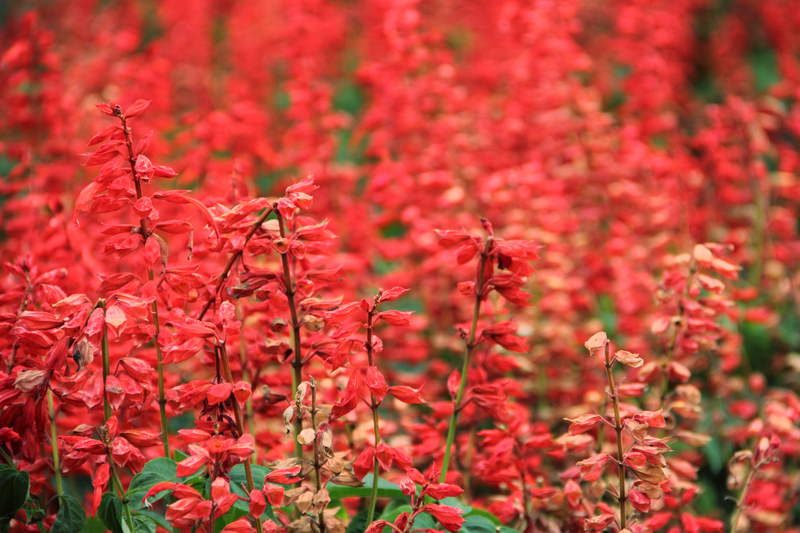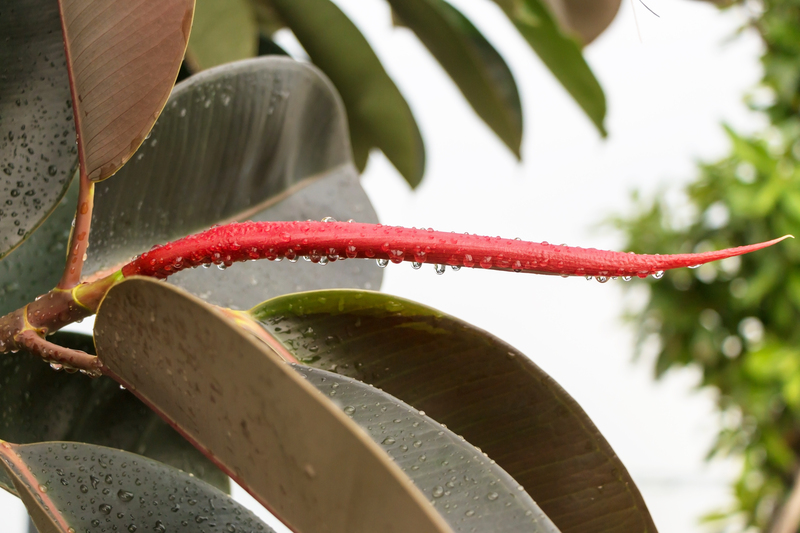Winter Garden Rescue: Safe Planting Practices
Posted on 25/05/2025
Winter Garden Rescue: Safe Planting Practices for a Flourishing Cold-Season Garden
As the crisp winter air settles and frost dusts the landscape, gardening enthusiasts everywhere face unique challenges. But with proper planning and safe planting practices, your winter garden can thrive all season long. In this comprehensive guide, we'll reveal proven tips and techniques to safeguard your plants and ensure a vibrant, healthy winter garden. Whether you're a beginner or an experienced green thumb, you'll discover essential steps to rescue, nurture, and protect your garden during chilly months.
Why Safe Planting Practices Matter in Winter
Winter introduces a host of stressors to plants: freezing temperatures, limited sunlight, icy winds, and fluctuating soil conditions. Implementing safe planting practices in your winter garden is crucial not only to protect your investment but to maintain plant health and achieve a beautiful off-season landscape. By prioritizing plant rescue and employing expert planting tips, you can minimize winter loss and foster a garden that rebounds with vitality come spring.
The Unique Challenges of Winter Gardening
- Soil compaction: Moist soil can freeze and compact, limiting root oxygen.
- Frost damage: Sudden temperature drops can destroy sensitive tissues.
- Limited sunlight: Short, dark days reduce growth and slow down photosynthesis.
- Watering difficulties: Frozen ground and runoff can make hydration tricky.
These hurdles underscore the importance of implementing safe planting techniques tailored to winter conditions.

Preparing Your Winter Garden: The Foundation of Safe Planting
Preparation is paramount for winter garden safety and success. Before you even think of planting, it's essential to evaluate your garden's climate, pick appropriate plant varieties, and enrich your soil. Let's break down these pivotal steps.
Assess Your Area's Winter Hardiness
- Consult your local USDA hardiness zone or regional equivalent.
- Select plants known to survive in your zone's temperature extremes.
- Account for microclimates--sunny, protected areas may support less hardy varieties.
Choose the Right Winter Plants
- Opt for winter-hardy vegetables such as kale, cabbage, leeks, and spinach.
- Plant cool-season ornamentals like winter pansies, heather, and hellebores.
- Incorporate evergreens to maintain year-round structure and interest.
Enrich and Prepare the Soil
- Add organic matter like compost or leaf mold to improve drainage and root health.
- Test pH and adjust as needed--most winter crops prefer slightly acidic to neutral soil.
- Avoid working soil when wet or frozen to prevent compaction and damage.
Safe Planting Techniques for a Thriving Winter Garden
Your preparation sets the stage, but planting safely in winter requires careful technique. Follow these proven strategies to protect young roots and strengthen plants against winter adversity.
Plant at the Right Time
- Early fall or late summer: Ideal for establishing roots before deep freezes.
- Potted transplants: Can often be planted later if well-insulated.
- Always check long-range weather forecasts to avoid frost immediately after planting.
Proper Planting Depth and Spacing
- Plant at the same depth as the nursery container--not deeper!
- Loosen root balls and tease apart dense roots to encourage outward growth.
- Allow heat-loving plants extra space for airflow, minimizing fungal issues in damp, cool weather.
Mulching: A Winter-Rescue Essential
- Apply a 2-4 inch layer of organic mulch (straw, bark, compost) around plants.
- Mulch moderates soil temperature, retains moisture, and shields roots from freezing.
- Keep mulch a few inches away from stems to discourage rot and pest activity.
Tip: In regions with harsh cold, consider using winter protection fabric or horticultural fleece for added insulation.
Protecting Plants from Winter Damage
Rescue your garden this winter by anticipating and preventing the most common cold-season hazards to your plants.
Frost and Freeze Protection
- Use cloches, cold frames, or even overturned buckets to cover tender seedlings during frosty nights.
- Group container plants in a sheltered area or indoors during freeze events.
- Cover established beds with row covers or garden blankets to trap warmth.
Preventing Windburn and Desiccation
- Install windbreaks using burlap screens or dense shrubs to buffer winter winds.
- Water evergreens during dry spells; winter winds can dehydrate foliage.
- Spray anti-desiccant products on vulnerable leaves for extra protection.
Defending Against Pests and Disease
- Remove plant debris to combat overwintering pests and spores.
- Inspect for rodent tunnels or burrows; consider wire mesh to protect root zones.
- Rotate winter crops annually to prevent soil-borne diseases.
Safe Watering Practices for Winter Gardens
Watering strategies change dramatically in the winter compared to other seasons. It's vital to prevent both drought stress and waterlogging, as plant roots are particularly sensitive in cold weather.
How to Water Effectively
- Water deeply but infrequently, allowing soil to dry slightly between intervals.
- Water in the morning to give excess moisture time to evaporate before night frosts.
- Avoid watering frozen soil--it can damage roots and encourage rot.
Monitor Moisture Levels
- Check soil moisture 2-3 inches below the surface before irrigating.
- Use mulch and raised beds to aid in drainage if your region experiences frequent winter rains.
- Reduce frequency as plants enter dormancy, but do not let the soil completely dry out.
Winter Garden Rescue Tips: Maintenance and Monitoring
Safe planting is not a one-time event--but an ongoing commitment. Regular observation and care are essential during winter months to protect your plants and support their recovery.
Routine Maintenance Tasks
- Inspect your garden weekly for signs of damage, disease, or distress.
- Prune dead or damaged branches only; avoid heavy pruning until late winter or early spring.
- Gently brush off snow to prevent limb breakage, especially on evergreens.
Feeding and Fertilization
- Stop fertilizing by mid-autumn; excess nitrogen can force tender growth prone to cold injury.
- Opt for slow-release, organic feeds in early spring after the risk of deep frost has passed.
Expert Tips for Advanced Winter Garden Rescue
If you want to go beyond the basics, consider the following advanced strategies to boost your garden's resilience:
- Heated propagation mats: Great for starting seeds indoors or in protected greenhouses.
- Soil solarization: In fall, cover beds with clear plastic to trap solar heat and kill pathogens before winter planting.
- Winter sowing: Use milk jugs or plastic bins to start hardy perennials outside for a head start in spring.
- Utilizing microclimates: Plant against south-facing walls or near water features to benefit from stored daytime warmth.
Common Winter Planting Mistakes to Avoid
- Planting too late: Roots need time to establish before soil freezes.
- Ignoring soil quality: Poor drainage or compaction increases winter loss.
- Over-mulching: Excess mulch can smother roots and harbor pests.
- Neglecting young plants: Seedlings and transplants require vigilant care and protection.
- Using the wrong plant varieties: Select only those rated for your zone's winter minimums.
The Rewards of Safe Winter Gardening
Implementing winter garden rescue strategies and safe planting techniques doesn't just protect your current garden--it sets the stage for lush, healthy growth next spring. Gardeners who nurture their beds through winter often enjoy:
- Higher plant survival rates and less replanting come spring.
- Vigorous early blooms from overwintering bulbs and perennials.
- Continuous harvests of hearty veggies like kale and winter lettuce.
- A landscape that looks attractive and cared for, even in the coldest months.

Frequently Asked Questions: Winter Garden Rescue
Can I plant during winter?
Yes, but timing and plant selection are crucial. Hardy vegetables, bulbs, and perennials can often be sown or transplanted in early winter, depending on your climate.
How do I know if my soil is too frozen to plant?
Test a small area with a trowel. If the soil is hard as rock, wait for a thaw. If you can dig easily and the soil crumbles, it's safe to plant.
How much should I water in winter?
Water only when needed--soil should be moist, but not soggy. Overwatering during dormant periods can lead to root rot.
Is mulching necessary in all climates?
Mulching benefits almost every winter garden, but is especially critical where freeze-thaw cycles are common. In mild climates, a thinner layer will suffice for weed and moisture control.
Conclusion: Start Your Winter Garden Rescue Today
With knowledge, planning, and dedication, you can build a robust, beautiful garden that weathers the winter in style. By following safe planting practices, selecting the right plants, improving your soil, and providing vigilant care, your cold-season landscape will thrive--not just survive.
Start your winter garden rescue now and enjoy the profound rewards of outdoor beauty and homegrown produce, even in the heart of winter. With these expert tips and proven winter planting practices, you'll be well-equipped for gardening success all year long!

